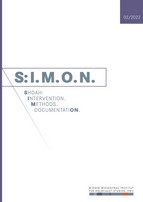The Tale of the Jew. The Codes of Post-World War Two Antisemitism in Hungary (1944–1946)
The Tale of the Jew. The Codes of Post-World War Two Antisemitism in Hungary (1944–1946)
Author(s): Péter AporSubject(s): Studies in violence and power, WW II and following years (1940 - 1949), Fascism, Nazism and WW II, History of the Holocaust, History of Antisemitism, Ethnic Minorities Studies, Peace and Conflict Studies
Published by: Wiener Wiesenthal Institut für Holocaust-Studien
Keywords: Post-World War Two; Antisemitism; Jews; Holocaust; Hungary; 1944-1946;
Summary/Abstract: This article focuses on the themes and tropes of the antisemitic imagination in the immediate post-World War Two period in Hungary. It argues that, during this period, the notion of the “Jew” represented a malleable identity that encapsulated qualities and modes of behavior which industrial and agricultural workers attached to the definitions of their alleged enemies. The article first explores how debates of property restitution framed the struggle for material survival in the countryside as an essentially Christian-Jewish conflict and, hence, affirmed the idea of discernible “Jewish” interests and a “Jewish” social class. Second, it follows the perceptions of material conflicts and interprets the rumours against surviving Jewish communities which were accused of kidnapping Christian children to allegedly make sausages out of them, which was the most common form of antisemitic accusation during the immediate post-war months. Second, the article argues that these accusations framed by notions of food and nutrition were tales that metaphorically encapsulated popular perceptions of the Jews. The Jews in these stories acted as shortcuts to the broader social category of privileged and better-off groups. Third, the article highlights how the belief that Jews were wealthier than others had been crafted in the interwar period and particularly during the war. As the article points out, the politics of discrimination were stimulated by a desire to discover and acquire “Jewish wealth”, which was a central theme of the contemporary anti-Semitic imagination. Nonetheless, as the article argues, “Jewish wealth” was the product of ghettoisation and of institutionalised robbery, which garnered petty property from deported Jewish citizens together and, thus, rendered the previously only imaginary “Jewish treasures” visible.
Journal: S:I.M.O.N. Shoah: Intervention. Methods. Documentation.
- Issue Year: 9/2022
- Issue No: 2
- Page Range: 4-25
- Page Count: 22
- Language: English

